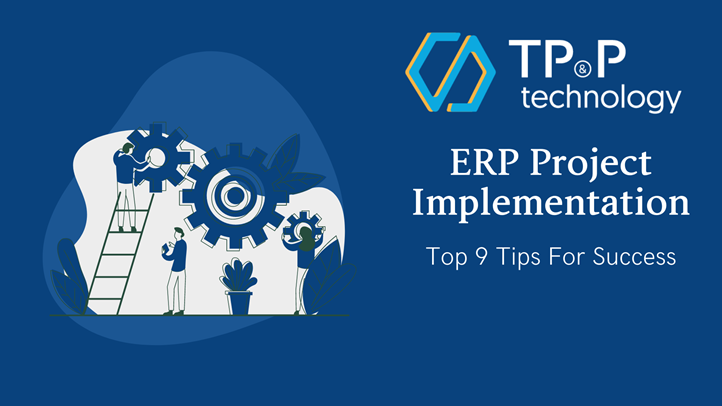
9 Tips For A Successful ERP Implementation
Technology innovation has brought numerous changes in the economy, leading to increases in productivity and efficiency, at the same time adding complexity to the manufacturing. These changes in business processes surely require employees’ flexibility and agility, businesses that embrace changes often find their employees are more willing to learn and adapt.
New and complicated software or solutions like cloud, AI, big data solution, 3D printing, and other real-time collaboration are now the game-changing factors that keep many businesses to stay ahead of the game, giving them a more competitive advantage.
However, along with the benefits of ‘new age of manufacturing’, complexity is unavoidable. Luckily, the next generation ERP Solutions are available to simplify the processes.
For many reasons, the idea of selecting, implementing, and deploying an ERP system seems like a daunting task as the risks seem to outweigh the benefits. Many questions pop up.

In the previous blog post, we mentioned ‘8 Steps To Kick-Start An ERP Project’, and today we would like to share with you 9 tips that guarantee a successful ERP implementation’.
1. Define your end results
Many businesses when making the decision to implement ERP, they don’t know exactly what they want at the end of the process. Another key risk that many business owners face in implementing ERP systems is not being able to make an impact on the business bottom line.
We suggest you to understand your business, what you do, what you want to achieve, map out your process and where you want to go. Begin by defining the scope of projects. Focus on specific processes and requirements. What impacts can ERP make on your business? Why do you need to do it now?
The more precise you are, the more details your ERP implementation partner can have, therefore, they will be able to find the problems and opportunities to give out the best solution when it comes to ERP.
2. Don’t reuse old workflows
Many businesses buy a new ERP system without a thorough understanding of their business and what they should do. Make sure that you’re not spending an awful lot of time and money to replace something similar system
3. Business processes blueprint
By mapping out the processes before starting thinking about the IT component of the ERP implementation, you will have much more clarity in your digital transformation journey. In order to map out the business processes, get all of the business stakeholders, the end-users into the same rooms to document what they do, and questions why they do things. You will then be able to see what are the areas that are a challenge and which specific areas of the business need to be taken care of.
4. Ensure having a long term plan for your solution
Businesses who think and plan ahead are holding a higher chance to be successful in digital transformation. Planning different stages with different stakeholders, even after you have already deployed the solution will ensure you have the satisfied result.
5. Executive-level sponsorship
Make sure you constantly involve the senior executives during the project process to help mitigate the risks of architecting processes in general.
6. Assemble the right project team
Aligning the right project team early on in the project is a big game-changer. A clear and concise charter for the project with the engagement of both employees and C-level officers will impact the success of the project. A team with a key decision-maker who understands the problems, knows their strengths and weaknesses, and where they should head to combine with a group of skillful employees with the right skill set is better than a team that is available.
7. Make user training a priority
Training the core team and training the end-users on the software you’re about to use is a bare necessity. Giving your employees the general information about what you’re about to do, or training them little by little before the end of the project will save you a bunch of time and effort.
As you already know which ERP solution to use and plan the implementation phase, make sure users know the new functionality and what benefits them. This will help in encouraging them to be fully engaged with the digital transformation transition.
8. Focus on getting the right data into the system
When it comes to data migration, the key is to start early, and choose the right people in the business to do it. Test and test and test again as good data management requires constant improvement.
9. Select the right partner
Besides choosing the right solution, the right partner is also the key to success. Often, people choose some IT solution based solely on the cost, and sometimes the vendors choose it based on the costs as well. But the important thing is how that solution will fit your business needs.
The right strategic partner is someone who knows exactly what solution is the best for you. They have the same mindset and the same approach as you, which will result in building long-term business relationships.
ERP solutions give assistance to businesses to collect, store, manage, and analyze data. Data can be anything related to business operation activities. Without the proper understanding and knowledge of it, you will likely hit many roadblocks.
Side-Notes:At TP&P Technology, we have a strong team with the right skill set and extensive experience to help you. Contact us today to know more about our solution and how we can help you in your digital transformation journey!



